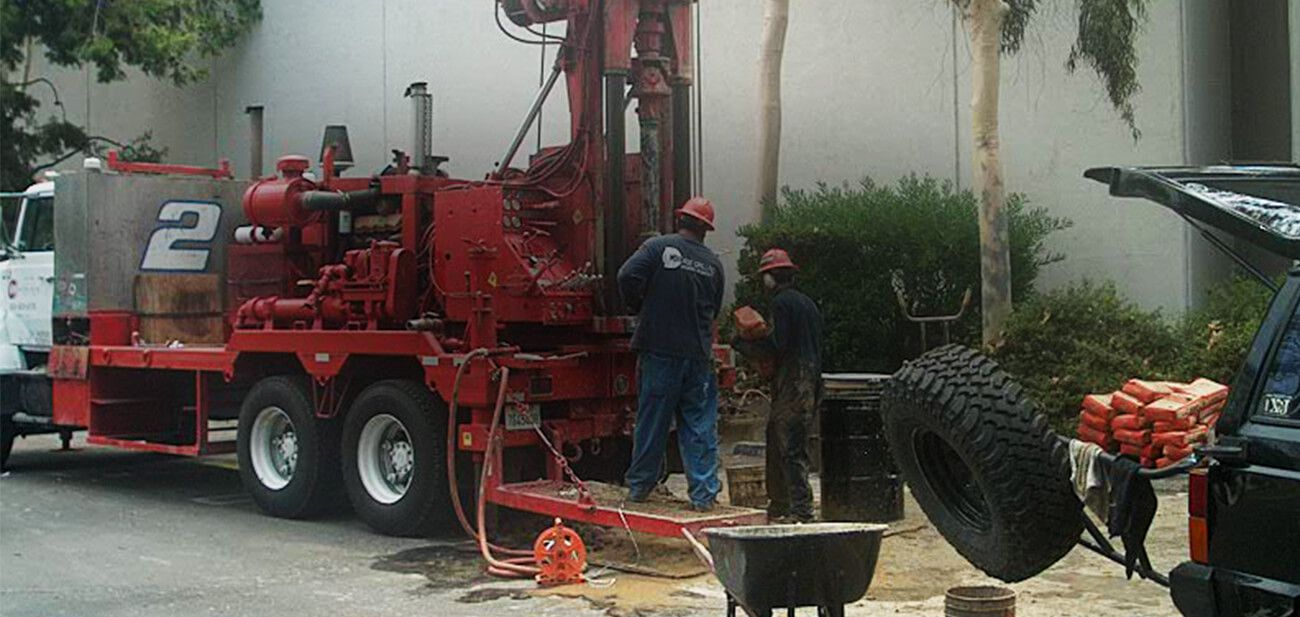Understanding Geotheta: Important Insights into Geotechnical Engineering Innovations
Understanding Geotheta: Important Insights into Geotechnical Engineering Innovations
Blog Article
Unveiling the Essential Geotechnical Solutions: Just How Geophysical Survey, Incline Security Analysis, and Groundwater Checking Enhance Facilities Advancement
In the realm of facilities growth, the importance of geotechnical solutions can not be overstated. Geophysical survey, incline security analysis, and groundwater tracking stand as pillars that strengthen the foundation of massive tasks. These solutions offer very useful insights into the subsurface problems, possible dangers, and overall feasibility of building undertakings. By harnessing the power of sophisticated modern technologies and specialist analysis, infrastructure designers can browse complex difficulties with insight and accuracy (geotheta). As we untangle the intricate web of geotechnical services, a deeper understanding emerges of exactly how these essential elements integrate to not only minimize risks but also optimize the performance and long life of facilities projects.
Relevance of Geophysical Survey
Performing a geophysical survey is crucial in infrastructure growth as it provides important understandings into the subsurface problems and potential geological threats. By using numerous geophysical methods such as ground-penetrating radar, seismic studies, and electromagnetic induction, geologists and engineers can map out the underground frameworks and recognize possible dangers prior to building begins. This proactive technique assists in staying clear of pricey surprises during the building and construction stage, ultimately conserving money and time.
Geophysical studies are particularly valuable in analyzing the security of the ground, finding underground utilities, and determining prospective environmental issues. Understanding the dirt structure, deepness of bedrock, and groundwater level levels is crucial for developing solid foundations and water drainage systems that can endure all-natural forces and protect against soil disintegration.
Moreover, geophysical studies play a significant function in ensuring the security and durability of framework projects by supplying important details for site choice, course planning, and danger reduction strategies. Overall, the value of geophysical surveys in infrastructure advancement can not be overemphasized, as they develop the foundation for successful and sustainable building and construction projects.
Enhancing Incline Security Analysis
Enhancing incline security analysis is a vital element of geotechnical engineering in guaranteeing the safety and resilience of framework tasks. One secret technique for improving slope stability evaluation is the application of mathematical modeling software application, which allows designers to replicate different slope problems and possible failing systems.
Moreover, conducting thorough field investigations, consisting of geological studies and geophysical testing, can improve the accuracy of slope stability evaluation. In general, boosting slope stability evaluation is crucial for making certain the long-term safety and security and sustainability of infrastructure tasks.
Duty of Groundwater Monitoring
Reliable groundwater surveillance plays an essential duty in ensuring the stability and safety of facilities jobs. Groundwater degrees can considerably impact the structural stability of structures, passages, and other below ground frameworks. By continuously monitoring groundwater degrees and high quality, designers can determine prospective risks such as soil disintegration, structure instability, over at this website and waterlogging.
Groundwater tracking helps in examining the influence of construction activities on local aquifers and water sources. It enables the early discovery of any type of groundwater contamination, protecting against environmental threats and guaranteeing conformity with laws. Additionally, by comprehending the groundwater characteristics, engineers can apply ideal dewatering actions to control water inflow during excavation and building processes, lowering the danger of flooding and architectural failing.
Integrating Geotechnical Provider
Groundwater tracking, a critical aspect of infrastructure development, lays the groundwork for integrating geotechnical services flawlessly into building and construction projects. This integration enhances the total job design, construction, and preparation phases, leading to a lot more economical and efficient facilities advancement.
In addition, the assimilation of geotechnical solutions permits for the recognition of possible threats and difficulties early in the project lifecycle, making it possible for positive measures to be executed to alleviate these problems. Via a multidisciplinary approach that integrates geophysical, geological, and hydrological data, designers can optimize building processes, decrease ecological effect, and make certain the lasting security and efficiency of the facilities. Generally, integrating geotechnical solutions is necessary for successful and lasting infrastructure advancement.

Benefits for Framework Advancement
In the world of framework development, the utilization of integrated geotechnical solutions produces a wide range of advantages that considerably improve project outcomes. One primary advantage is the improved danger administration attained via geophysical studies, which aid identify subsurface conditions and potential risks before building commences. This positive strategy decreases the likelihood of unexpected challenges during the project, leading to cost savings and timely conclusion. Moreover, incline security evaluation plays a crucial duty in ensuring the safety and security and long life of framework by analyzing the security of slopes and suggesting required reinforcement measures. By applying these evaluations, engineers can design frameworks that stand up to ecological conditions and natural pressures, decreasing the risk of incline failures and linked problems. Additionally, groundwater surveillance allows continuous monitoring of water levels and top quality, permitting early discovery of potential concerns such as seepage or contamination. This aggressive tracking not just safeguards the stability of infrastructure however also sustains sustainable water administration practices. Generally, the incorporation of geotechnical solutions in infrastructure advancement not only improves task effectiveness yet also adds to the longevity and durability of constructed facilities.
Verdict

Enhancing incline stability evaluation is a vital aspect of geotechnical design in ensuring the security and resilience of facilities tasks. In Related Site general, boosting slope security analysis is important for ensuring the long-lasting safety and security and sustainability of facilities tasks.
Incline stability evaluation plays a crucial function in making certain the safety and durability of framework by evaluating the stability of inclines and recommending required support actions. geotheta.In conclusion, geophysical survey, incline security evaluation, and groundwater monitoring are important geotechnical solutions that play a vital role in improving facilities growth. The advantages of incorporating these services into facilities growth are clear, and their relevance can not be overstated in ensuring the long-term success and sturdiness of framework tasks
Report this page